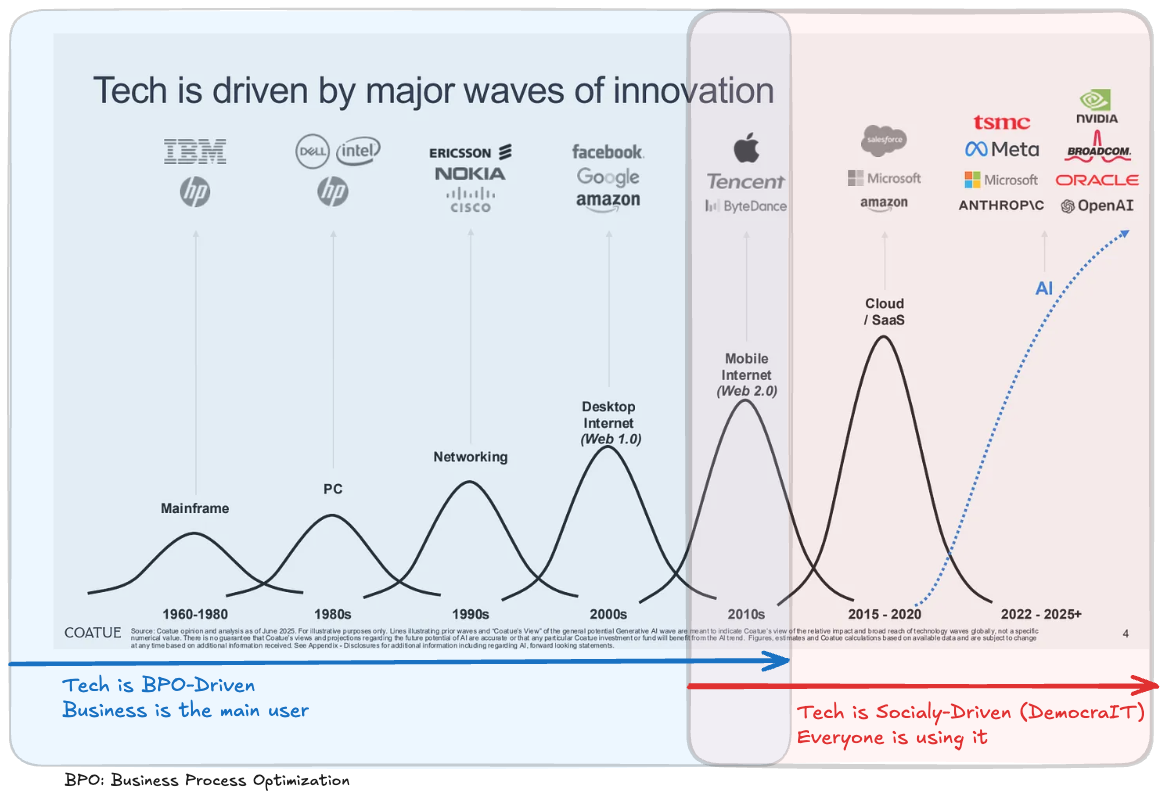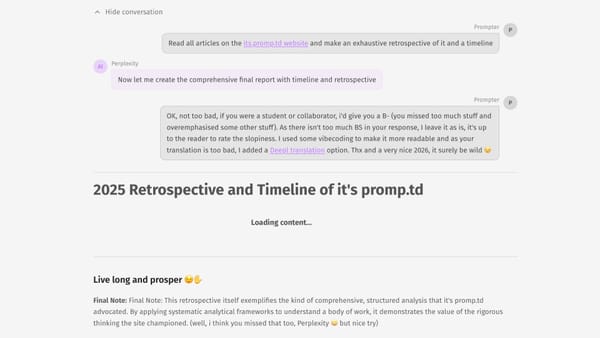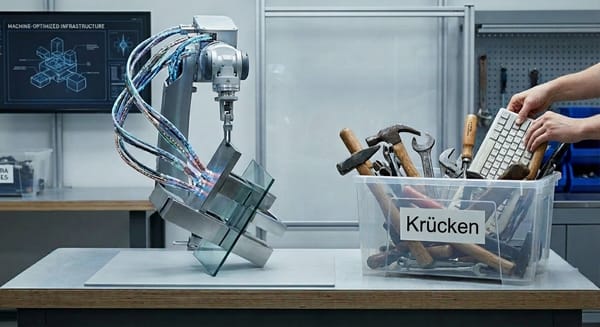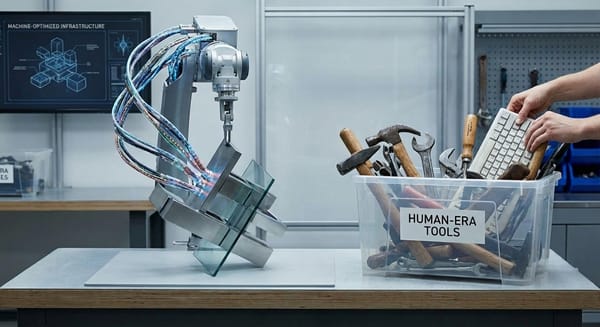The Great IT-Divide: Why AI-Adoption in enterprises is failing
IT innovation moved from business tools to social tech, creating two distinct IT worlds: Business-IT (compliance, efficiency) and Social-IT (social interaction). Grasping this divide is crucial for enterprise adoption and explains why businesses struggle with AI uptake.

(TL;DR? Jump directly to the video version of this article 😉 )
The AI Paradox in Business
The excitement surrounding Artificial Intelligence for business is undeniable. Companies are investing heavily, eager to use the technology that has so profoundly reshaped our personal lives into their corporate workflows. Yet, despite this enthusiasm and investment, many organizations are struggling to realize tangible, compliant value from their AI initiatives.
This creates a puzzling paradox. If AI is powerful enough to curate our social feeds and manage vast global information networks, why does it so often stumble within the structured environment of a business? The answer isn't only flaws in the technology itself but a fundamental, and often overlooked, shift in the IT landscape that has occurred over the last decade. The AI tools dominating today's market were born in the universe of "Social-IT," not "Business-IT."
Takeaway 1: IT Innovation Isn't Driven by Business Only Anymore
Until roughly 2010, businesses were the primary engine of IT innovation. The corporate world set the agenda, driving the development of technologies designed to structure data and optimize internal processes. The singular, overarching objective was to cut costs and improve efficiency. IT was built for business, by business needs.
The post-2010 era, however, triggered a "democratization of IT." This shift was fueled by the global adoption of smartphones, now numbering nearly 7 billion worldwide. This explosion of personal computing power gave rise to innovations that were never intended for a corporate setting. Social media, for example, wasn't developed to reduce overhead but to enable and digitize social interactions. This trend was further accelerated by the COVID pandemic, as technology became a critical tool for maintaining social connections.

This change represents a historic reversal. For the first time, the most visible, rapidly evolving, and widely adopted technologies were being developed for social utility, not corporate efficiency. The center of gravity for IT innovation had shifted from the boardroom to the global public.
Takeaway 2: There Are Two Parallel Universes of IT
The modern technology landscape has effectively split into two distinct and parallel universes. These two types of IT now overlap, creating significant confusion for businesses trying to adopt new tools. To navigate this landscape, we must first learn to distinguish between them.
- Business-IT: Its purpose is business process optimization (BPO), cost reduction, and efficiency improvement. Because businesses are heavily regulated entities, compliance is a non-negotiable requirement for Business-IT.
- Social-IT: Its purpose is the digitization of social interactions and other everyday human activities.
Another key difference lies in how these universes are funded and how they handle user data. Business-IT typically involves traditional purchase or leasing models, reflecting corporate procurement practices. In contrast, Social-IT often relies on users exchanging personal data and attention for free access to services, a model that is largely incompatible with business requirements.
In this direct comparison, it becomes clear that the core "DNA" of these two tech universes is fundamentally different:
| Business-IT | Social-IT | |
| Funding Model | Traditional purchase and leasing processes. |
Users often provide personal data and attention in exchange for free services. |
| Data Privacy | Exchanging informations/data for services is typically taboo. |
Exchanging personal data for services is the standard model. |
Takeaway 3: Today's AI Was Born in the Wrong Universe for Business
The collision of these two universes directly explains the central problem with enterprise AI today: the current generation of AI is overwhelmingly "Social-Driven," not "Business-Driven." These powerful tools were developed and trained within the Social-IT paradigm, a world where the free exchange of data for services is the default operating model.
This model is fundamentally incompatible with the core requirements of Business-IT. For a business strategist, this is not a technical detail—it is a fundamental conflict of business models. A model that treats data as currency is a non-starter in a world that treats data as a liability that must be protected.
It is this foundational mismatch that explains why so many AI tools lack the necessary prerequisites for a "clean business application." They were simply not built with the DNA of compliance, security, and the traditional procurement models that define the corporate IT ecosystem.
Conclusion: The Questions for Business Leaders and Software Developer
The struggle many companies face when implementing AI is not necessarily a failure of the technology or their strategy. Instead, it is often the result of a fundamental mismatch between the social world the AI was designed for and the compliant, secure business world in which it is being deployed. The two universes of IT have collided, and businesses are feeling the impact.
This understanding reframes the evaluation process for new technology. As you assess the next AI tool promising to transform your operations, the most important question might not be, "What can it do?" but rather, "For which world was it built?" Answering this will be the first step in demanding—and building—a new class of "Business-Native AI" designed from the ground up for the world you actually inhabit.
For software developers, the crucial question becomes: "How can we design AI solutions that meet strict business requirements for compliance, security, and efficiency?" Addressing this challenge will be key to bridging the IT-Divide and unleashing the full potential of AI in enterprises.
TL;DR Area 😉
Live long and prosper 😉🖖




